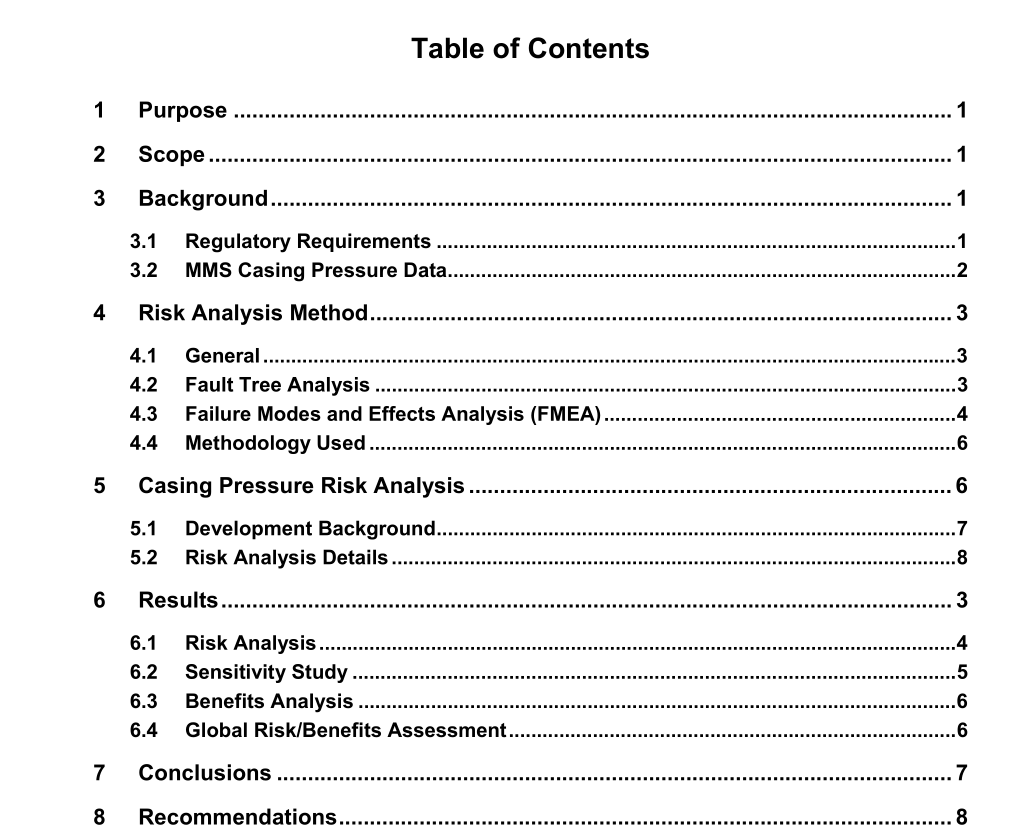API TR 17TR3 pdf download

API TR 17TR3 pdf download.An Evaluation of the Risks and Benefits of Penetrations in Subsea Wellheads below the BOP Stack
2 Scope
The American Petroleum Institute (API) contracted with Stress Engineering Services (SES) to analyze the risks and benefits inherent in continuing to prohibit penetrations in subsea wellheads and compare them to those introduced by allowing the practice. Special attention was paid to the risk and benefits introduced by monitoring annuli other than the “A” annulus (the annulus between the production tubing and the production casing strings). The “risk-based” portion of this specific study did not need to be fully quantitative, but the analysis was done in a way that will easily lead to a fully quantitative analysis as more complete data become available. The scope of this study is limited to completed conventional subsea wells in the Gulf of Mexico (GOM). This report documents the results of this study of the risks and benefits of additional penetrations in subsea wellheads below the BOP stack for the purpose of monitoring additional casing annuli for sustained casing pressure (SCP).
3 Background
3.1 Regulatory Requirements The current industry-standard design philosophy of subsea wellheads prohibits penetrations below the BOP stack. This is codified in the current standards (API Spec 17D and ISO 13628-4). The “no penetrations” language was instituted by the authors of the first edition of API Spec 17D based on intuition and industry practice. No formal reliability analysis (qualitative or quantitative) was performed to ascertain the risks and benefits of allowing penetrations in the wellhead housing below the BOP stack. At a high level, the authors of the standard were concerned with protecting the integrity of the well during drilling operations by preventing the likelihood of a leak below the BOP through a penetration. The apparent concern was that introducing a penetration below the BOP could lead either to a well-control incident caused by loss of the hydrostatic head of drilling fluid in the riser above the BOP or the exacerbation of an existing well-control incident by loss of integrity below the stack. Standard subsea wellhead designs have always provided for monitoring of the “A” annulus for pressure by means of an annulus monitor line in the tree’s production control umbilical and/or an electronic pressure sensor in the tree’s annular flowpath.However, historically, subsea wellheads have not provided any annular access to outer casing string cavities once a wellhead packoff has been installed after cementing operations. In 1989, the MMS established regulations, described in 30 CFR 250.517, for sustained casing pressure. These regulations required that all annuli be monitored for sustained casing pressure and that every occurrence of sustained casing pressure be reported immediately to the District Supervisor. In 1991, in an effort to streamline government and reduce burdensome paperwork, the MMS issued a letter that dictated changes in the sustained casing pressure policy.
In 2002, the MMS requested that the industry perform an evaluation of the risks and benefits of allowing penetrations in subsea wells below the BOP stack. The intent of the request was to reconcile the difference between the MMS regulations for annular monitoring and the current industry standards (API Spec 17D and ISO 13628-4) for subsea wellhead design. To accomplish this, the API contracted Stress Engineering Services to analyze the risks and benefits inherent in continuing to prohibit penetrations below the wellhead and compare them with those introduced by allowing the practice.
3.2 MMS Casing Pressure Data
The MMS maintains a database on casing pressure events in outer continental shelf (OCS) platform wells in the GOM. Table 1 is a summary of the MMS database of 15,516 OCS wells and is shown graphically in Figure 1. Of these wells, 1446 (9.3%) of them are reported to have casing pressure greater than 20% of the minimum internal yield pressure (MIYP) of the casing. Within these 1446 wells, 906 of them have casing pressure in the production casing annulus (“A” annulus – accessible via current subsea designs), 261 of them have casing pressure in the intermediate casing annulus (“B” annulus), 347 of them have casing pressure in the surface casing annulus (“C” annulus), and 95 of them have casing pressure in the conductor casing annulus (“D” annulus). The data shows that only about 4.5% of the wells are affected by casing pressure in the outer annuli (B, C, or D) at a level greater than 20% of the MIYP pressure of the casing. This drops to 1.8% when the pressure is greater than 30% of the MIYP, and further drops to 0.3% when the pressure is greater than 50% of the MIYP. This indicates that the frequency of occurrence of casing pressure is very low and still has a design margin of two. This data of casing pressure in the outer annuli is shown in Figure 2.









